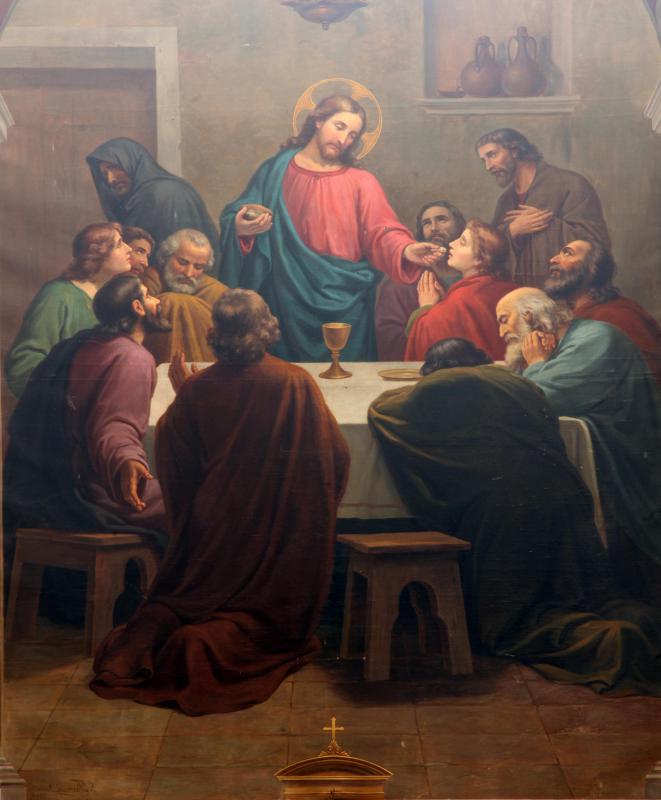At WiseGEEK, we're committed to delivering accurate, trustworthy information. Our expert-authored content is rigorously fact-checked and sourced from credible authorities. Discover how we uphold the highest standards in providing you with reliable knowledge.
What is Transubstantiation?
According to Christian scriptures, Jesus Christ assembled His disciples for a final meal shortly before His imprisonment and execution. During this meal, traditionally known as the Last Supper, Jesus commanded the group to eat bread and drink wine in remembrance of His physical flesh and blood. This symbolic act continues today in a religious ceremony called the Eucharist, or Holy Communion. Several Christian denominations, however, believe the bread and wine presented at these services is actually transformed into the literal flesh and blood of Christ through a mystical event known as transubstantiation.
The doctrine of transubstantiation is not universally recognized by all Christian denominations. Primarily, the Roman Catholic and Eastern Orthodox churches believe in a literal transubstantiation--at some point during the Eucharist, the bread and wine are fundamentally converted into Christ's real flesh and blood. Other Christian denominations either view the communion ceremony as symbolic or possibly consubstantiated, meaning the essence of Christ's blood and flesh are mystically present along with the literal bread and wine, but not consumed by those who receive it.

Transubstantiation has become one of the more controversial issues faced by the modern Catholic Church. Some critics of the belief suggest that Catholic doctrines governing transubstantiation are not based on the scriptural teachings of Jesus Christ or the later epistles of St. Paul. The act of eating human flesh or drinking human blood would have been considered barbaric during the time of Christ, even as an act of remembrance. Although several passages in the New Testament suggest eating and drinking Christ's flesh and blood as a demonstration of faith, the act is usually viewed as symbolic.

The first use of the term transubstantiation in Christian literature does not appear until at least 1,000 years after Christ's death and resurrection. The importance of the Eucharist or Holy Communion had been stressed since the earliest days of the Christian Church, but belief in transubstantiation was not widespread until much later.
Those who believe in transubstantiation do not necessarily believe the elements of the Eucharist, bread and wine, actually change physically. The conversion into the literal flesh and blood of Jesus Christ occurs on a spiritual level humans cannot measure or define. The bread and wine continue to have all the sensory elements of ordinary bread and wine. After these elements have been consecrated by a priest, however, they are also manifestations of Christ's body and blood. Transubstantiation is not considered church-sanctioned cannibalism, since the elements retain their mundane qualities throughout the ceremony.

Protestant denominations in general do not believe in the doctrine of transubstantiation, although they do retain many of the same elements as the Catholic Eucharist ceremony. The bread and wine represent the flesh and blood of Jesus Christ on a symbolic level, but the ceremony is meant to be a remembrance of His sacrifices on the cross as well as a time for private communion between believers and God.
AS FEATURED ON:
AS FEATURED ON:
















Discussion Comments
I beg to differ. Transubstantiation is a fact. Read about St Teresa and John of the Cross. They survived solely on Holy Communion. Also there was a woman, Maria de Costa, who survived for 20 years solely on communion. Get the book "Mysteries of the Eucharist." There are many cases.
Wow. Transubstantiation. Such a long word for little kids. Does that mean Catholic children are generally better spellers than non Catholic children?
Wow, the history of the view of Transubstantiation is way off here.... The earliest Christians all viewed the Eucharist as literally the spiritual body of Christ.... It was viewed this way until the Reformation. Read the writings of Ignatius of Antioch and especially Justin Martyr. It is extremely explicit.
Justin Martyr-
"We call this food Eucharist, and no one else is permitted to partake of it, except one who believes our teaching to be true and who has been washed in the washing which is for the remission of sins and for regeneration [i.e., has received baptism] and is thereby living as Christ enjoined. For not as common bread nor common drink do we receive these; but since Jesus Christ our Savior was made incarnate by the word of God and had both flesh and blood for our salvation, so too, as we have been taught, the food which has been made into the Eucharist by the Eucharistic prayer set down by him, and by the change of which our blood and flesh is nurtured, is both the flesh and the blood of that incarnated Jesus" (First Apology 66 [A.D. 151])."
Post your comments